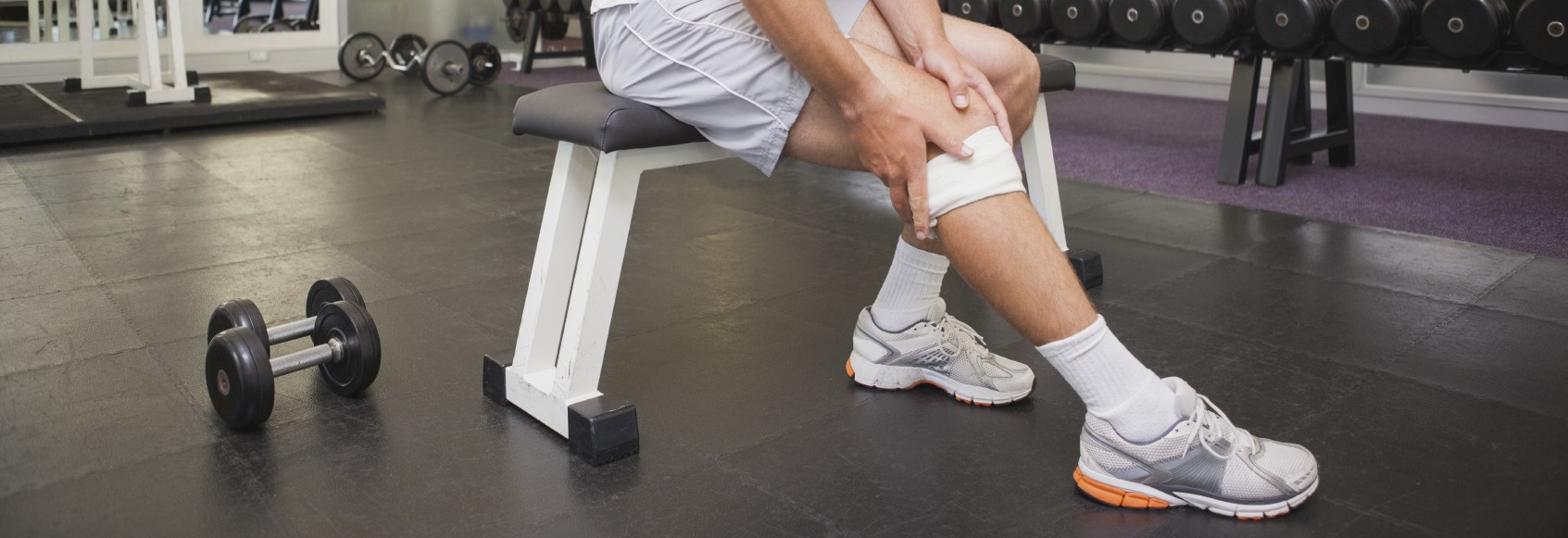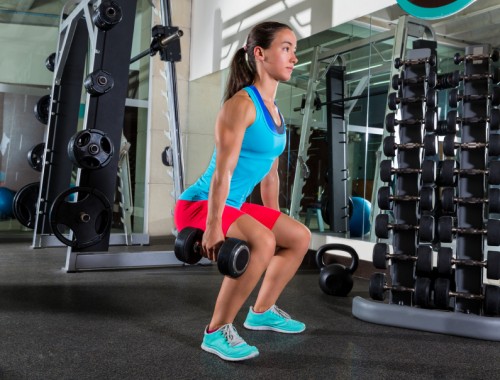
A squat is an essential lower-body strengthening exercise. It builds muscle mass and is also a functional exercise. However, the delicate structure of the knee joint is susceptible to injuries during a squat. If you experience knee pain during a squat, or have suffered from a knee injury, a few modifications to this exercise should keep you going until you heal.
Ways To Modify Squats After a Knee Injury
First, you can limit the range of motion through which you squat. In a traditional squat with your feet hips-distance apart, the goal is to bend your knees and lower your hips until your knees are bent at a 90-degree angle and your thighs are parallel with the ground. After an injury, modify squats by not bending so far and concentrating on placing more bend in your hips than in your knees. The result is that your knee will receive less torque since it does not move forward as much. You may feel you can lift heavier amounts of weights with this modification, but it may also place more strain on your lower back, so keep weights within comfortable limits.
 A second modification to reduce the strain on your knees is to increase the distance between your feet. Instead of keeping them at a hips-distance apart, widen your stance. Keep your knees and toes pointing forward in this position to maintain proper form. You should immediately feel the difference, plus this stance allows you to support a straight spine and reduce the pressure on your lower back.
A second modification to reduce the strain on your knees is to increase the distance between your feet. Instead of keeping them at a hips-distance apart, widen your stance. Keep your knees and toes pointing forward in this position to maintain proper form. You should immediately feel the difference, plus this stance allows you to support a straight spine and reduce the pressure on your lower back.
One of the concerns with knee injuries and squats is a lack of flexibility in the ankle. This may cause you to feel more discomfort. You can alleviate this by placing your heels on a slightly raised platform or a ramp. Many lifters put two 25-pound Olympic weight plates on the floor and position their heels on the edge of the plates. This allows for greater movement of the knee and can reduce your pain. Begin with a light weight and gradually progress as your body adapts to the modification.
Another way to modify squats after a knee injury is by changing where you hold the weight. For instance, if you typically place a barbell across your upper back, make a change and hold a dumbbell in each hand with your arms at your sides. If you prefer to perform a powerlifting squat with the barbell, complete the exercise with a spotter for safety.
The American College of Sports Medicine, ACSM, recommends to always use proper form whether you are performing a traditional or modified squat. Continue to:
- Exhale on the exertion
- Lower with control
- Keep spine straight
- Position knees behind the toes
- Gradually increase the weight amount
- Do not perform if fatigued
- When your form suffers, limit the repetitions
- If knees hurt- stop the squat
- Allow recovery time between training sessions
Squats are an effective muscle-builder, but should always be used with caution. If you experience any lasting knee pain, please speak with your physician to rule out any serious, long-lasting injuries such as a torn meniscus. However, after recovering from an injury, you can still safely perform squats by using careful modifications.


